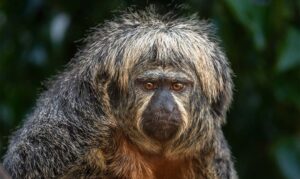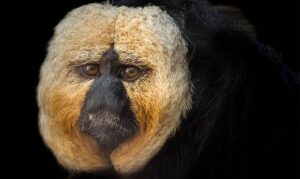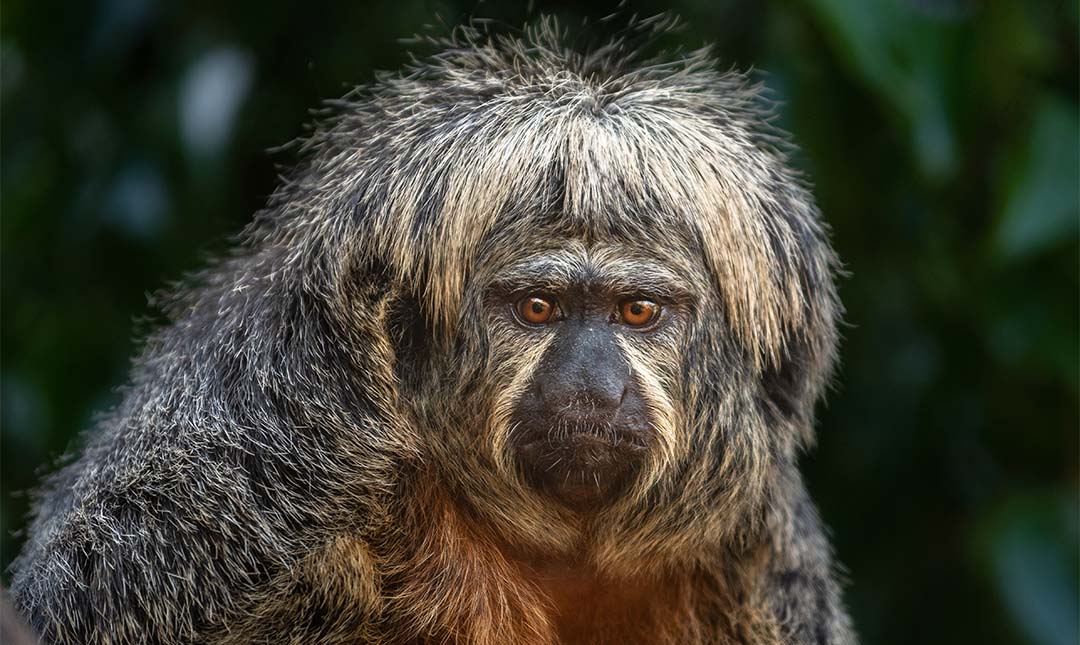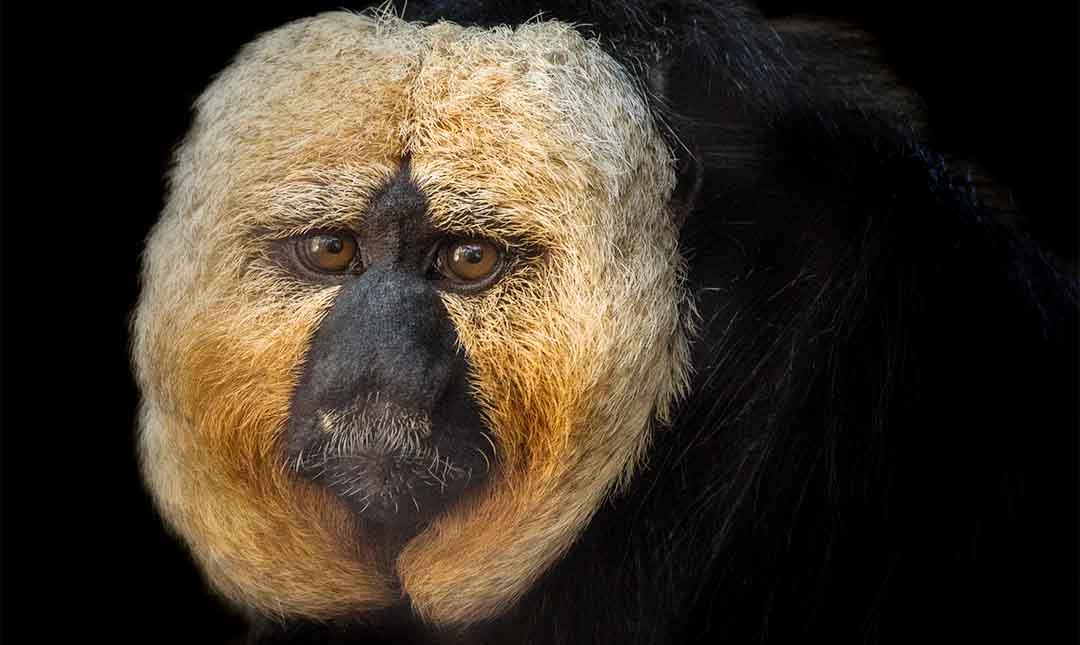About
Active during the day, white-faced saki prefer the middle to lower branches in the rainforest canopy and rarely come down to the ground. Their bushy tails are as long as their bodies and are used for balance. Unlike other New World monkeys, their tails are not prehensile and cannot be used to grip branches. Saki monkeys’ legs are considerably longer than their arms, and when excited, they use a series of hops, bounds, jumps, and leaps on two feet to cover ground rapidly. Strong incisors help them open the seeds and fruit that make up most of their diet. They are important seed dispersers. Sakis sleep curled up on open branches. Their major predator is the harpy eagle, but they are also hunted by jaguars, ocelots, and snakes.
Males and females have different colors of fur, a trait known as sexual dichromatism. Males are black with white faces and females are duller with gray, brown, or red strips of fur on their faces. Their coarse, long fur makes them appear larger. They communicate with each other through vocal duets, whistles, growls, and squeals. Their relatives include red uakaris. These monkeys are difficult to study in the wild due to their remote habitat.
These monkeys use scent markers (primarily males) to establish their territory. They have scent glands near their throats that they rub against trees and will also mark territory with their urine.


Habitat
White-faced saki monkeys live in tropical rainforests of South America including northern Brazil, Venezuela, Guyana, Suriname, and French Guiana.
Diet
Fruit and seeds make up 90 percent of this monkey’s diet, supplemented by flowers, young leaves, ants, and, occasionally, small birds and bats.
Physical Characteristics
An adult saki’s body length is 12 to 16 inches with a tail that adds an additional 12 to 16 inches. Weight ranges from three to five pounds, and their lifespan in the wild is about 15 years. In human care they can live up to 30 years or more.
LOCATION WITHIN THE ZOO
You’ll find this animal in the South America section. See Zoo Map.


